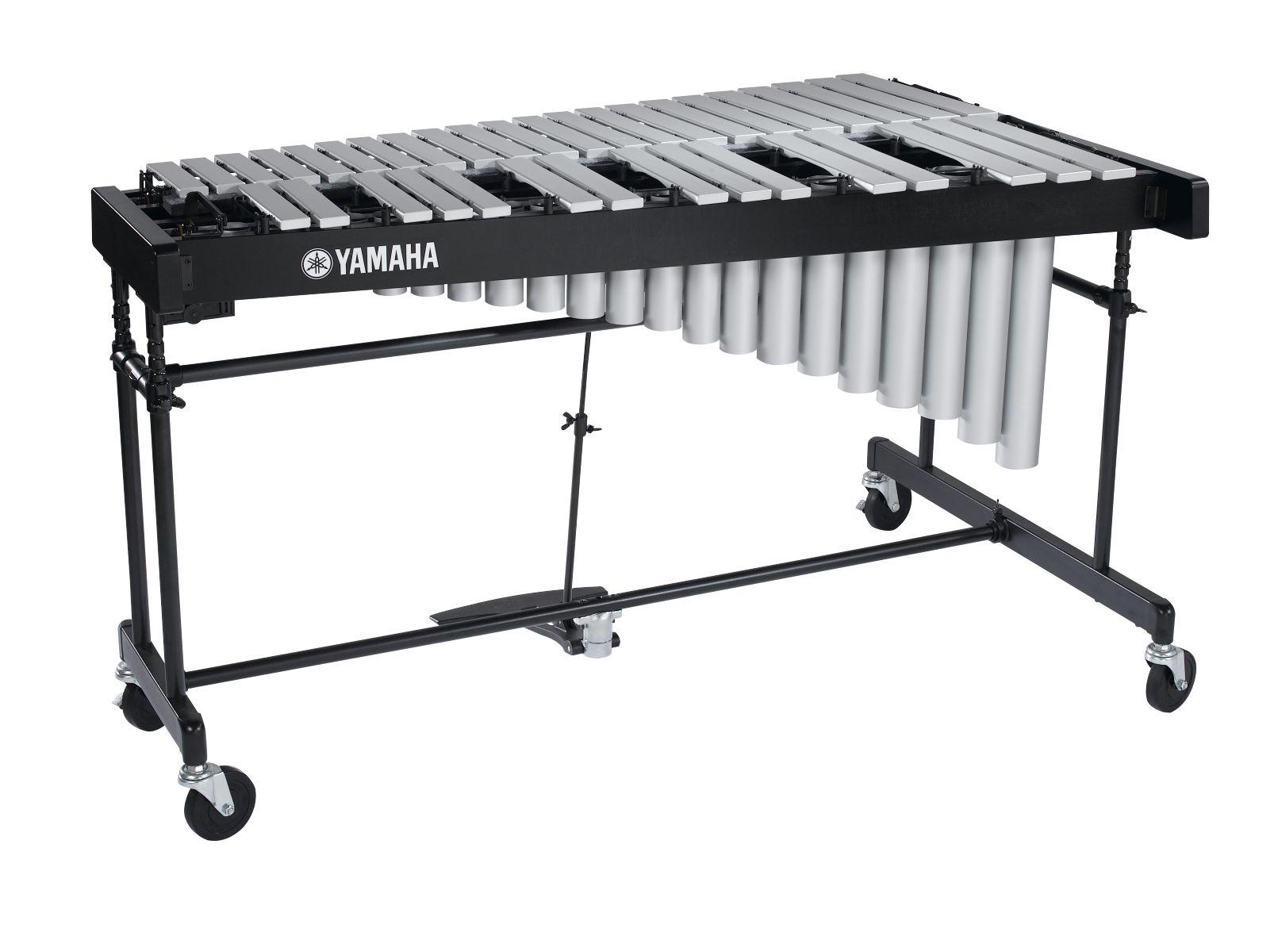
The vibraphone, also known as the vibes, is a fascinating musical instrument that has gained popularity over the years. Its distinct sound and versatile capabilities make it a favorite among jazz musicians, orchestras, and even modern pop and rock bands. Whether you’re a music lover or simply curious about this unique instrument, you’re in for a treat. In this article, we will uncover 18 interesting facts about the vibraphone that will surely pique your interest and deepen your appreciation for this remarkable piece of musical craftsmanship. From its origin and development to its unique construction and famous players, get ready to dive into the vibrant world of the vibraphone!
Key Takeaways:
- The vibraphone, invented in the 1920s, creates mesmerizing tones with its motor-driven rotating disks and 18 metal bars. It’s a visually appealing and versatile instrument used in jazz, classical, and popular music.
- The vibraphone, part of the percussion family, requires skillful technique and regular maintenance. Its unique sound has inspired contemporary composers and continues to captivate new generations of musicians.
The vibraphone creates a unique and mesmerizing sound.
The vibraphone, also known as the vibes or the vibraharp, is a fascinating musical instrument that produces enchanting and hypnotic tones. Unlike other percussion instruments, the vibraphone utilizes motor-driven rotating disks beneath each metal bar to create a vibrato effect, resulting in its distinctive sound.
The vibraphone was invented in the early 20th century.
The vibraphone was invented in the early 1920s by Hermann Winterhoff of Germany, but it was later improved upon by J.C. Deagan in the United States. Deagan’s additions, including the motor-driven rotating disks, contributed to the instrument’s popularity and widespread use in both jazz and classical music.
There are 18 metal bars on a standard vibraphone.
A typical vibraphone consists of 18 metal bars, arranged in a chromatic scale from low to high. These bars are made of aluminum or steel and are struck with mallets or beaters to produce sound. Each bar is tuned to a specific pitch, allowing for a wide range of musical possibilities.
The vibraphone is often played with two or four mallets.
Unlike other percussion instruments where players use only one beater, vibraphonists typically use two or four mallets to play the instrument. This technique allows for the creation of complex and intricate melodies, harmonies, and chords, adding to the versatility and expressive capabilities of the vibraphone.
The vibraphone is commonly used in jazz and popular music.
The vibraphone has found a prominent place in jazz music, often used for improvisations, solos, and ensemble playing. Notable jazz musicians such as Lionel Hampton, Gary Burton, and Bobby Hutcherson have popularized the vibraphone in their performances, introducing its unique sound to a broader audience.
The vibraphone can produce both sustained and staccato sounds.
By adjusting the motor speed and controlling the dampening system, vibraphonists can create sustained notes similar to those produced by a piano or a guitar. They can also achieve staccato or percussive sounds by striking the bars more forcefully.
Vibraphone resonators amplify and shape the sound.
Unlike other percussion instruments, the vibraphone utilizes tube-shaped resonators positioned below each metal bar. These resonators, made of aluminum or brass, amplify and shape the sound, giving the vibraphone its characteristic warm and rich tones.
The vibraphone can be played in various musical genres.
While the vibraphone is commonly associated with jazz, it has also found its place in other musical genres such as classical, contemporary, and even popular music. Its versatile nature allows musicians to explore different styles and experiment with unique sounds.
The vibraphone is played both as a solo instrument and in ensembles.
Whether it’s a jazz trio, a classical ensemble, or a percussion ensemble, the vibraphone is a versatile instrument that can be played both as a solo instrument and as part of a larger group. Its blending capabilities and distinctive sound make it an integral part of many musical arrangements.
The vibraphone requires skillful technique and musicality to master.
Playing the vibraphone requires a combination of technical skill, musicality, and an understanding of various musical styles. Mastering the instrument involves developing precise mallet technique, control over vibrato and dynamics, and an ability to navigate complex musical passages.
The vibraphone is a visually appealing instrument.
In addition to its captivating sound, the vibraphone is visually appealing with its shiny metal bars, resonators, and motor-driven disks. Its elegant design and captivating presence on stage contribute to the overall performance experience.
The vibraphone can be an expensive instrument to own.
Due to the complexity of its construction and the quality of materials used, the vibraphone can be relatively expensive compared to other percussion instruments. Professional-grade instruments can range from a few thousand dollars to tens of thousands of dollars.
The vibraphone requires regular maintenance and tuning.
Like any musical instrument, the vibraphone needs regular maintenance and tuning to ensure optimal performance. The mallets need to be replaced, the bars need to be cleaned, and the motor-driven disks require maintenance to ensure smooth operation.
The vibraphone has inspired many contemporary composers.
The unique sound and expressive capabilities of the vibraphone have captured the imagination of many contemporary composers. Its inclusion in compositions has contributed to the growth and diversity of the vibraphone repertoire.
The vibraphone is part of the percussion family.
The vibraphone belongs to the percussion family of instruments, which also includes drums, xylophones, marimbas, and timpani, among others. It adds a melodic and harmonic element to the percussive ensemble, enhancing the overall musical texture.
Vibraphones come in various sizes.
Vibraphones can vary in size, ranging from compact, portable models to larger, professional-grade instruments. The size of the instrument can impact its sound projection, tonal range, and portability.
The vibraphone has been featured in film soundtracks.
The unique sound of the vibraphone has led to its inclusion in various film soundtracks, adding an atmospheric and emotional touch to cinematic experiences. Its haunting melodies and ethereal tones have enhanced the storytelling in numerous movies.
The vibraphone continues to evolve and inspire new generations of musicians.
Despite being almost a century old, the vibraphone continues to evolve and inspire musicians of all genres. Its versatility, expressive capabilities, and unique sound make it a timeless instrument that will continue to leave a lasting impact on the world of music.
Conclusion
In conclusion, the vibraphone is a fascinating instrument that has a rich history and unique characteristics. Its vibrant sound and versatile nature have made it a popular choice among musicians in various genres. Whether you’re a music enthusiast or a professional musician, exploring the vibraphone and its capabilities can bring a whole new level of musical expression to your repertoire. So, go ahead and dive into the world of the vibraphone and let its melodic tones transport you to a mesmerizing musical journey.
FAQs
1. How does a vibraphone produce sound?
The vibraphone produces sound by striking metal bars with mallets. The bars are tuned to specific pitches, and their vibrations are amplified by resonators below. The speed of the motor-driven rotating discs, or fans, also affects the sound by altering the vibrato and intensity.
2. Is the vibraphone related to the xylophone or marimba?
Yes, the vibraphone is part of the percussion family and is related to the xylophone and marimba. However, it has distinct features, such as the presence of resonators and a motor-driven mechanism for vibrato effects.
3. Can the vibraphone be played in different musical genres?
Absolutely! The vibraphone is a versatile instrument that can be played in various musical genres. It is commonly found in jazz, contemporary classical, and even popular music. Its unique sound adds depth and richness to any musical composition.
4. How heavy is a vibraphone?
The weight of a vibraphone can vary depending on its size and build. On average, a professional-grade vibraphone can weigh between 150 to 250 pounds (68 to 113 kilograms). However, there are lighter and portable models available for easier transportation.
5. Are there different sizes of vibraphones?
Yes, vibraphones come in different sizes, ranging from four octaves to five octaves. The size affects the range of notes that can be played and the overall size and weight of the instrument. Larger vibraphones offer a wider range, but they may be more cumbersome to transport.
Vibraphones create mesmerizing sounds that captivate listeners. Invented in the early 20th century, these percussion instruments feature metal bars, resonators, and mallets. Vibraphones play a significant role in jazz, popular music, and film soundtracks. Mastering the vibraphone requires skillful technique and musicality. Vibraphones come in various sizes and continue to inspire new generations of musicians. Want to learn more about legendary vibraphone players? Read on to discover fascinating facts about Lionel Hampton, a pioneering jazz vibraphonist who helped popularize this unique instrument.
Was this page helpful?
Our commitment to delivering trustworthy and engaging content is at the heart of what we do. Each fact on our site is contributed by real users like you, bringing a wealth of diverse insights and information. To ensure the highest standards of accuracy and reliability, our dedicated editors meticulously review each submission. This process guarantees that the facts we share are not only fascinating but also credible. Trust in our commitment to quality and authenticity as you explore and learn with us.


